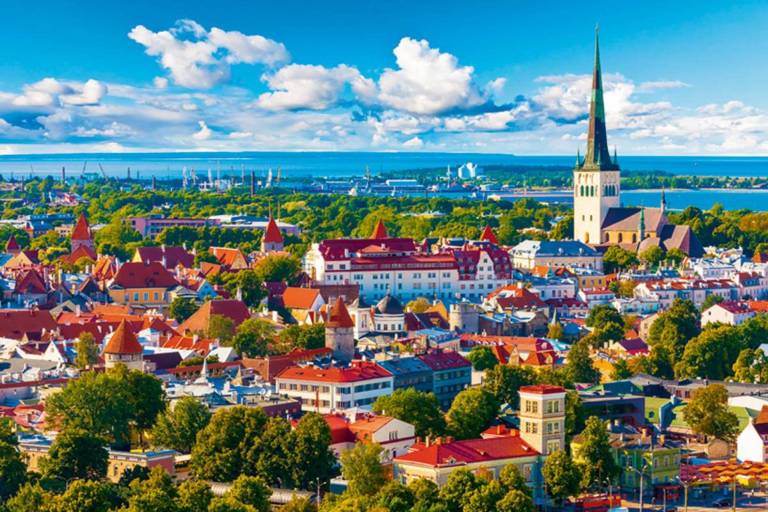Tourism in Estonia
Tourism in Estonia
General information about Estonia
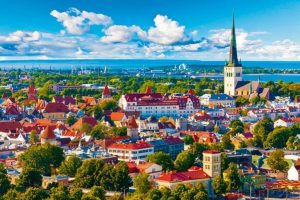
It is a country located in the Baltic Sea region in northern Europe. It is bordered to the north by the Gulf of Finland, on the west by the Baltic Sea, to the south by Latvia, and to the east by Lake Peipus and the Russian Federation.
Officially called the Republic of Estonia, Estonia is named after the Roman writer Tacitus, as in his book Germania he described a group of people called Assiti, in the ancient Norse sagas, referring to a country called Acetland.
Estonia’s climate is influenced by its geographical location. It is located in the Mixed Forest, a sub-region of the Atlantic continental zone, which in turn belongs to the temperate regions. It is also located on a transitional zone between the influence of a coastal climate and a continental climate. [16] According to the climatic classification called the Köppen classification, the western part of Estonia falls within a coastal climate zone with mild winters, while the eastern part of the country is within the range of a continental and humid climate with severe winters.
Culture and history in Estonia
Human settlement in Estonia became possible about 11,000 to 13,000 years ago, when the ice from the last ice age melted. The oldest humane colonization of Estonia was the colonization of the Puli, which was on the banks of the Pärnu River, near the town of Sindy, in the southwest of Estonia. According to the Chronicle, decolonization took place about 11,000 years ago, at the beginning of the ninth millennium BC.
Evidence of hunting and fishing communities was found around 6500 BC near the town of Cunda in northern Estonia. Handicraft of bone and stone similar to those found in Cunda are also found elsewhere in Estonia, as well as in Latvia, northern Lithuania and southern Finland. The kunda culture belongs to the middle stone age.
The end of the Bronze Age and the beginning of the Iron Age were marked by major cultural changes. The biggest change that happened was the move to agriculture, which remained the core of culture and economy. Between the fifth and first centuries AD, home farming was widely established, the population increased and colonialism expanded. There were cultural influences of Estonia coming from the Roman Empire.
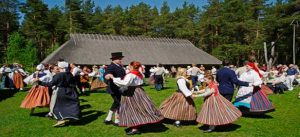
Estonia has been an important transit center since the medieval period. The country’s favorable geographical location, along with its developing infrastructure, provides good opportunities for all transportation and logistical related activities. Rail transport dominates the freight sector, carrying 70% of all goods, both domestic and international.
The road transport sector dominates the passenger transport, nearly 90% of all travelers travel by land. The rebuilding of the Tallinn-Tartu motorway has gained national attention as it connects two of the largest cities in the country. Reconstruction of highways (2 + 2 road) is part of the current coalition government program. Also the proposed permanent connection to Saaremaa Island is in the National Infrastructure Building Program. The costs of these projects have been estimated in billions of euros, which also gained a lot of media attention and caused public discussions about the viability.
Tourist areas in Estonia
Tallinn the capital
The city of Tallinn, the capital of Estonia, is located on the southern shore of the Gulf of Finland, and is an industrial and cultural center for Estonia and a major seaport, in addition to its richness as a historic city, and its residents were subject to many rulers, the last of whom was the Russians.
In 1991 Estonia declared its independence and now appears to be the most converging Baltic country with Western civilization, and this city, which preserved its medieval identity, embraced capitalism, and restaurants, hotels and shops opened every day, and the heart of Tallinn lies in the city located within the walls, and it is interesting to see Watchtowers, fortifications, surviving shops from the Middle Ages, and churches behind the walls that surround them.
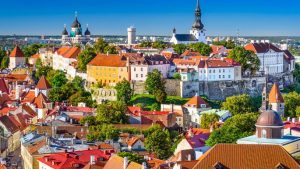
Tallinn has a maritime climate, with temperatures ranging from 50 to 80 degrees on the Fahrenheit scale from May to September, and in summer temperatures remain around 65 degrees on the same scale, and summer continues in June through August.

Tourism in Estonia
One of the best ways to spend time in Tallinn is to explore the old city, which was once two separate cities belonging to the Middle Ages, separated from each other by a wall, and the first is called Dom Hill, which is the upper city, and it is the seat of the ruling authority, while the lower city is located in the old city square, and it was a residence for merchants And a center of trade, the two cities are linked by two narrow steep streets.
Estonia has the distinction of being a country of lakes and islands like the rest of the Baltic countries, in addition to forests, which qualifies it to be a promising tourist destination of its youth, as it gained independence from the Soviet Union in 1991, and it needs more development of infrastructure and hospitality services to attract tourists.
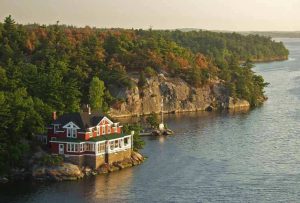
As for Tallinn, the capital, it is somewhat conservative compared to other European cities, and tourism is an important sector in this country, as it contributes about 15% of the country’s national income, in addition to food products, chemicals and wood products, where there are many forests.
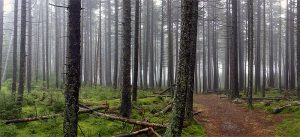
Castles and History
Estonia, especially Tallinn, is famous for its many tourist attractions, the most prominent of which are historical castles and ancient churches, and the ancient area of Tallinn is today one of the areas of human heritage that enjoys protection from UNESCO, and it is completely far from any change in its traditional old buildings made of cobalt stones Secret narrow staircases, and plenty of paths and paths that dazzle visitors at every corner.
You also find some workers practicing a lot of old traditional work, which does not stop the fun, but rather takes you to squares and other streets, parks and many landmarks left by the Soviet regime, especially in the north of the country.
Finmere
The Finmere region is located in the eastern part of the Baltic Sea in Estonia, b
